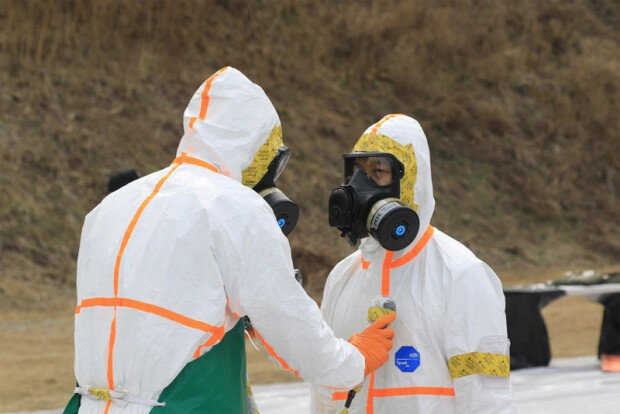US deploys Nuclear Disablement Teams to S. Korea in March
US deploys Nuclear Disablement Teams to S. Korea in March
Posted May. 01, 2023 07:52,
Updated May. 01, 2023 07:52

It was confirmed that South Korea and the U.S. conducted training during the Freedom Shield joint exercise in March to enter North Korea and disable its nuclear weapons in case of emergency. The U.S. Department of Defense released the details and pictures of the March training on the Defense Visual Information Distribution Service on Wednesday, the day of the summit between the two countries. It is deemed a warning against North Korea, following the ‘Washington Declaration’ made by the two countries’ leaders, which mentions measures to strengthen extended deterrence, including setting up the Nuclear Consultative Group (NCG).
According to the Department of Defense, the U.S. Army’s Nuclear Disablement Teams (NDT) trained with the South Korean Army’s Nuclear Characterization Teams (NCT) from March 20 to March 24. The training was for entering North Korean territory and removing warheads mounted on missiles in case of emergency. This is the first time that the U.S. Army’s deployment of NCT to South Korea and its joint training with the South Korean Army were revealed.
In the pictures, the members of South Korean and the U.S. armies are inspecting protective equipment during the training. The Department of Defense explained that NDT disables the infrastructure and components of nuclear and radioactive weapons of mass destruction (WMD) to remove the enemy’s capabilities, making the following WMD removal operations easier. The South Korean Army’s NCT is part of the ROK Army CBR Defense Command under the Ministry of National Defense and conducts similar missions as the U.S. NDT.
Meanwhile, Gen. Kenneth Wilsbach, the U.S. Pacific Air Forces commander, said during an interview with Japanese press on Saturday that the U.S. bombers would regularly operate above and around the Korean Peninsula and are likely to land in the peninsula. The last time the U.S. strategic bombers landed in South Korea was in 2016 with B-1B strategic bombers. Since then, they simply flew to the peninsula and conducted training before returning to the U.S. in case of North Korea’s provocations or joint training.
If a ballistic missile submarine (SSBN) calls at a South Korean port and B-52 or B-2 bombers that can carry nuclear weapons land in South Korea, it will send a strong warning from South Korea and the U.S. to North Korea that nuclear provocations will bring an end to the North Korean regime.
Sang-Ho Yun ysh1005@donga.com







